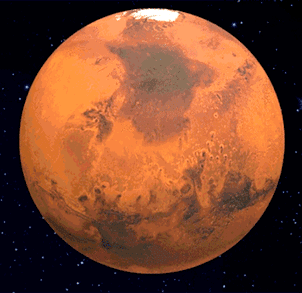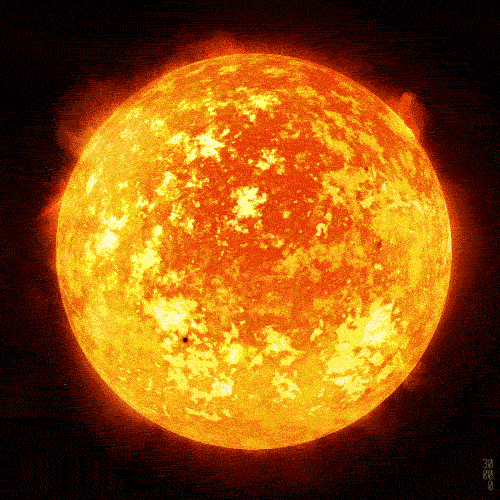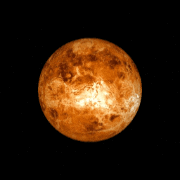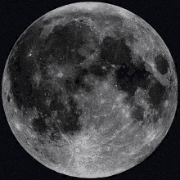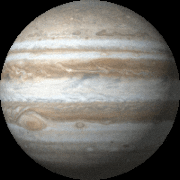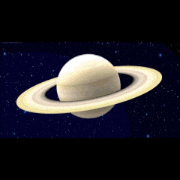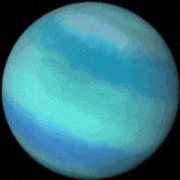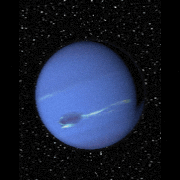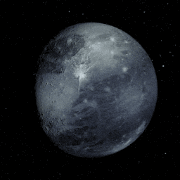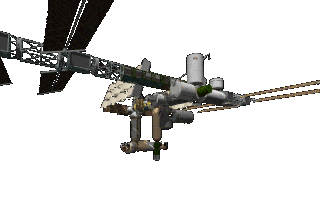Uranus — detailed summary
Basic facts
Type: Ice giant (outer planet).
Mean distance from Sun: ~2.87 billion km (19.2 AU).
Orbital period: ~84 Earth years.
Rotation period (sidereal): ~17.24 hours (retrograde-like orientation due to axial tilt).
Equatorial radius: ~25,362 km; polar radius: ~24,973 km (slightly oblate).
Mass: ~8.68 × 10^25 kg (≈14.5 Earth masses).
Average density: ~1.27 g/cm^3.
Mean temperature: effective radiating temperature ≈ 59 K; cloud-top temperatures ~76 K.
Appearance and atmosphere
Visual appearance: pale blue-green, caused primarily by methane absorption of red light; relatively featureless compared with Jupiter/Saturn but shows subtle bands, clouds and occasional storms.
Atmospheric composition: hydrogen (~82–83% by volume), helium (~15–16%), methane (~2–3% in upper atmosphere) plus trace amounts of water, ammonia, hydrogen sulfide and other hydrocarbons at deeper levels.
Clouds and haze: methane forms high-altitude haze and clouds; deeper layers likely contain clouds of hydrogen sulfide and water mixed with other ices.
Weather: winds reaching ~900 km/h near equator; long-lived vortices and seasonal changes; convective storms observed occasionally.
Internal structure
Layered structure: thin hydrogen/helium atmosphere over a thick “ice” mantle (mixture of water, ammonia, methane ices and supercritical fluids) surrounding a relatively small rocky/icy core.
Heat: emits little intrinsic heat compared with Neptune; internal heat flux is low and poorly understood (Uranus radiates almost as much heat as it receives from the Sun, much less than other giant planets).
Magnetic field
Strong but unusually oriented: magnetic dipole is tilted (~59°) relative to rotation axis and offset from planet center by a significant fraction of the radius.
Magnetosphere: complex and highly asymmetric; interacts with solar wind to produce aurorae and charged-particle dynamics distinct from other giant planets.
Unique axial tilt and seasons
Extreme axial tilt: ~98° (planet essentially rolls on its orbit). As a result:
Polar regions can be in continuous daylight or darkness for ~21 Earth years each (one half of Uranus’s 84-year orbit).
Strongly seasonal insolation patterns lead to long, slow changes in atmospheric appearance.
Rotation sense: because of the tilt, Uranus’s rotation appears “tilted over”; historically described as rotating on its side.
Rings and moons
Ring system: 13 known distinct rings (narrow, dark, composed of relatively large particles and dust); rings are faint compared with Saturn’s and were discovered in 1977.
Moons: 27 known moons (major five: Miranda, Ariel, Umbriel, Titania, Oberon). Moons show varied geology:
Miranda: highly varied terrain with huge canyons, coronae (suggesting past disruption/reshaping).
Ariel, Titania, Oberon, Umbriel: heavily cratered and show faulting, resurfacing evidence to varying degrees.
Origin: moons likely formed from a circumplanetary disk early in the Solar System or were shaped by collisions and re-accretion; the extreme axial tilt suggests a giant impact early in its history that also may have altered satellite system.
Exploration
Spacecraft visits: Voyager 2 flyby (January 1986) is the only close spacecraft encounter. Voyager 2 returned most of our direct data: atmospheric profiles, ring detection details, moon images, magnetic field measurements.
Future exploration: Uranus is considered a high-priority target for an orbiter mission to study ice-giant formation, interior structure, magnetosphere, rings, and moons. Proposed missions aim to enter orbit and deliver long-term, high-resolution observations.
Formation and significance
Formation: formed in the colder outer Solar System where ices (water, ammonia, methane) were abundant; composition implies large proportion of volatiles compared with
Jupiter/Saturn.
Scientific importance: understanding Uranus (and Neptune) is key to planet formation theory (ice giants occupy an intermediate class between gas giants and smaller rocky/icy bodies) and to interpreting the many “ice-giant” exoplanets found around other stars.
Notable curiosities
Faint intrinsic heat: unlike other giant planets, Uranus emits little excess heat—reason debated (e.g., past giant impact, inhibited internal convection).
Extreme seasons and long seasons create very slow atmospheric changes observable over decades.
Subtle visible cloud activity but intense storms detectable in infrared and by spacecraft/ground-based telescopes.
Quick reference (rounded)
Distance: 19.2 AU
Orbital period: 84 years
Rotation: 17.24 hours
Radius: ~25,362 km (equatorial)
Mass: 8.68 × 10^25 kg
Moons: 27
Rings: 13
